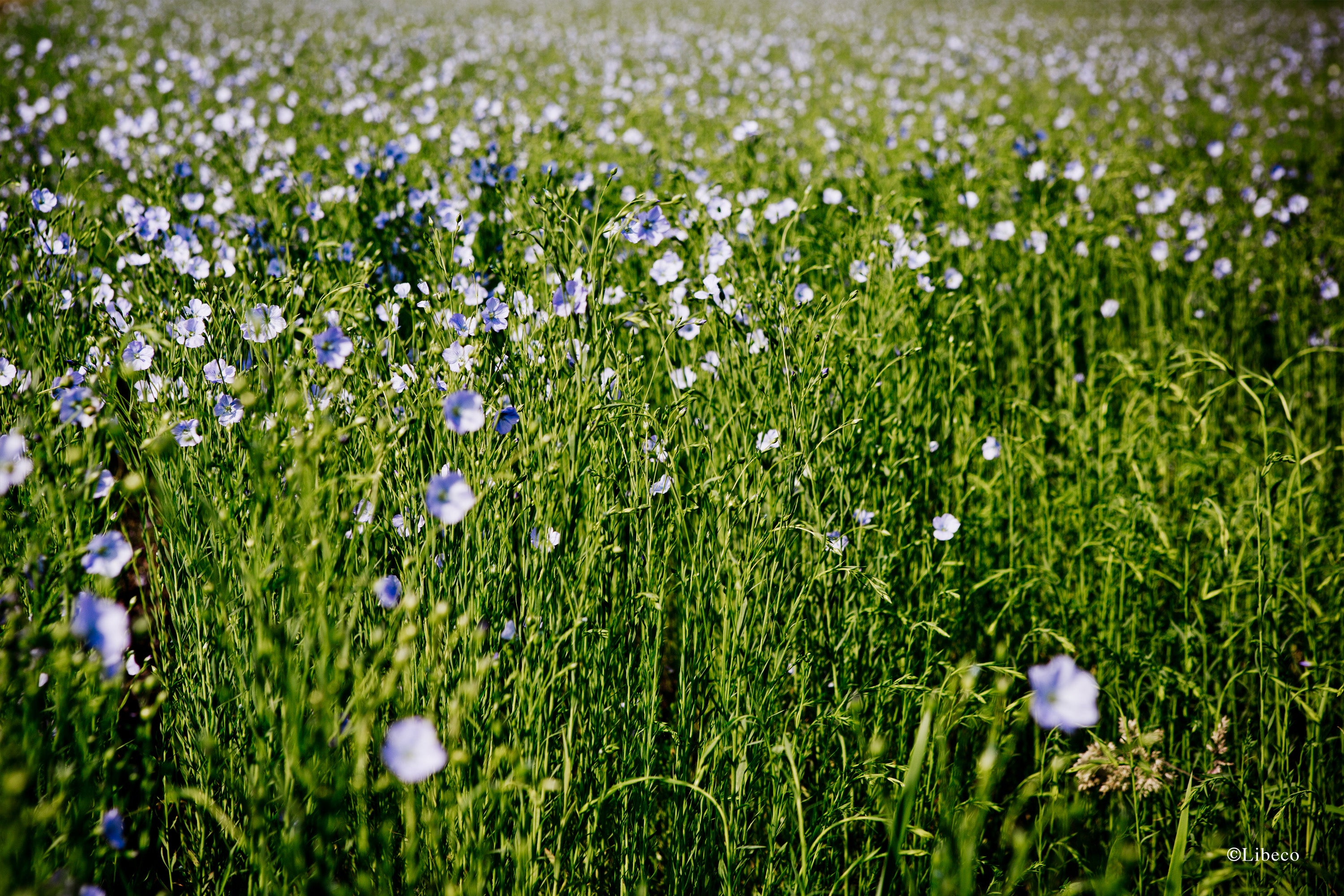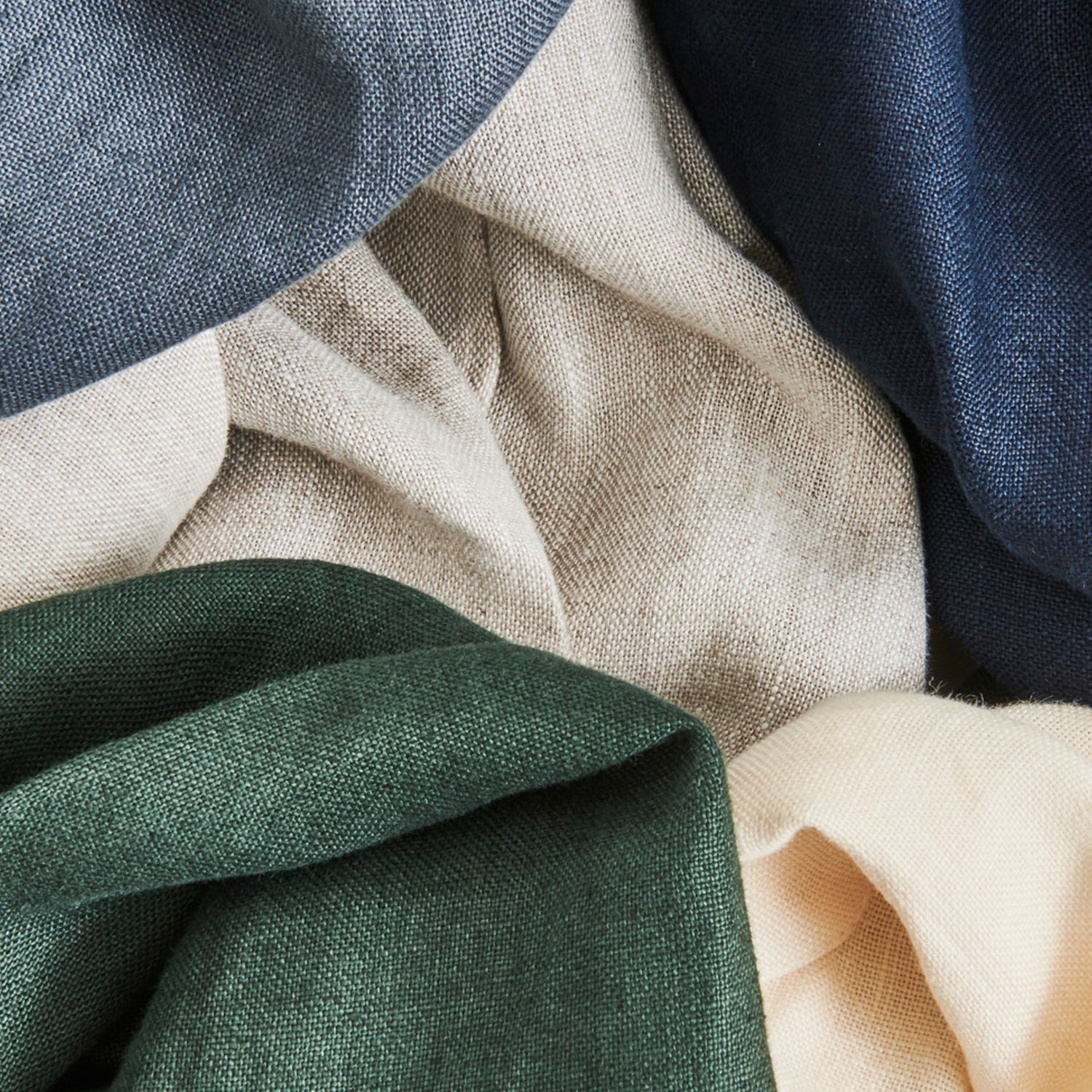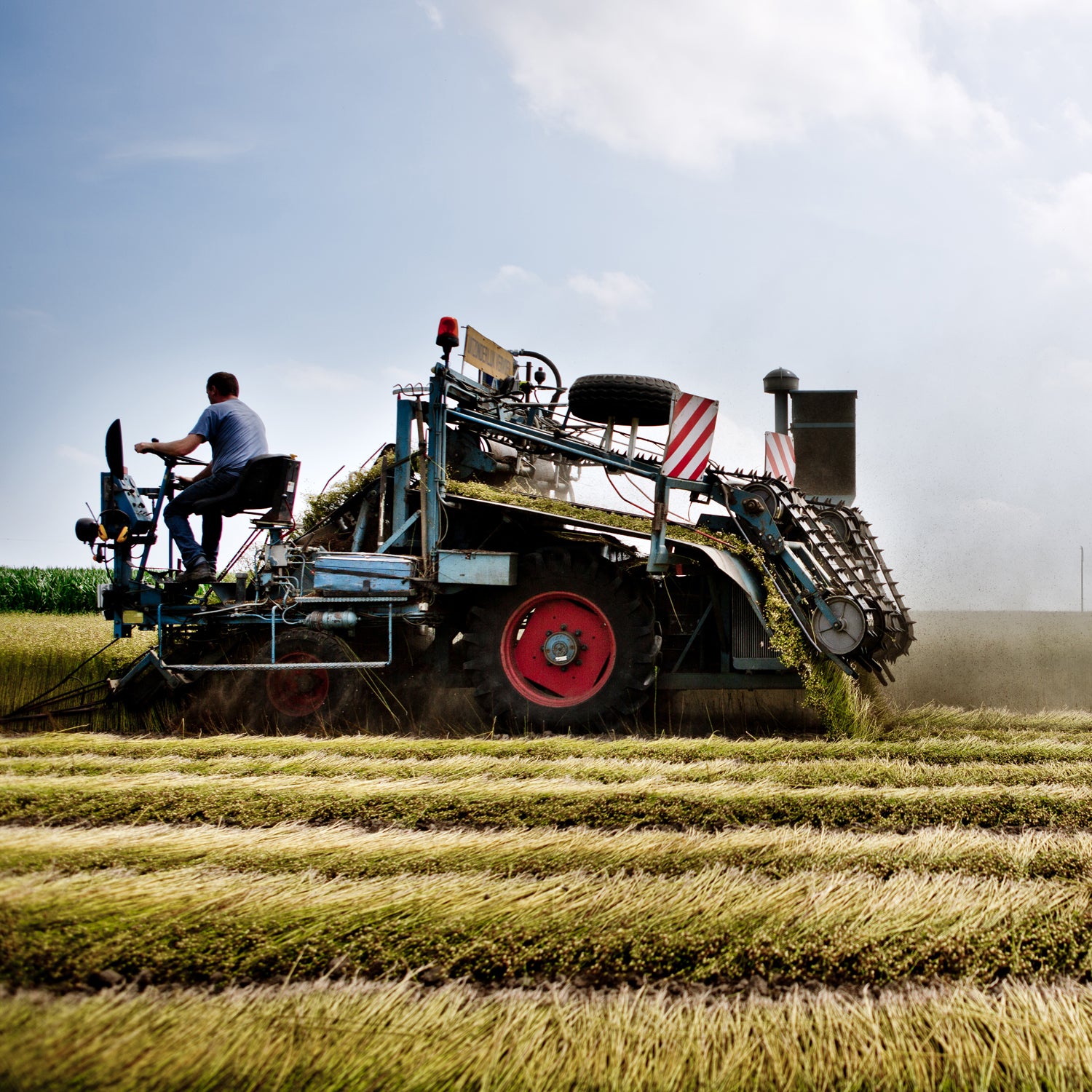
Linen & wool

Our Starting Point
Our primary material is 100% linen, complemented by 100% wool. A die-hard commitment to fabrics with unrivalled texture, natural durability, and underappreciated versatility.
In different weights and weaves, linen is a great fabric for all seasons. And, because it’s one of the world’s most sustainable clothing fabrics, it just makes sense that we should all be wearing more of it. So, why is it so sustainable?
Water Usage: Linen vs Cotton
The main difference between linen and cotton is the amount of water required to grow each crop. It typically takes around 8000 litres of irrigation to grow just one kilo of cotton. For context, that’s over 65 bathtubs of extra water to create enough cotton for one t-shirt and a pair of jeans.
And whereas cotton crops typically require intensive irrigation to produce a good yield, flax crops grown in Northern Europe – where 85% of the world’s flax is grown – only require natural rainfall to flourish. Hundreds of thousands of garments are made using European linen that requires no extra water at the crop phase.

Fertilizers & Pesticides
Intensive cotton farming also requires vast amounts of fertilizers and pesticides. Heavy usage of fertilizers to achieve the desired yield and initiates a vicious cycle that impacts biodiversity.
Cotton: a monoculture crop
The practice of cultivating monoculture crops like cotton leaches certain nutrients from the earth, deteriorating overall soil health, leading to high chemical use. Monoculture crops like cotton also encourage a high concentration of pests which then require heavy pesticide usage. Globally, cotton crops account for a monumental 6% of the world’s pesticide usage.
On top of having fewer natural enemies - read less requirement for pesticides - flax can only be sown once every six or seven years and is grown in strict rotation with a range of other crops. This has significant advantages for the preservation of local biodiversity.
Zero waste crop
The flax crop is something of a wonder crop in that it produces no waste. From animal fodder and paper to linseed oil and high-quality yarns, every part of the plant ends up being used.
Linen Applications
The applications of the plant beyond just yarn help make flax one of the world’s lowest impact clothing crops.
The plant’s woody stem is well suited to animal bedding, its Omega-3 rich seeds a healthy dietary supplement for humans and animals. Linseed oil - obtained from the dried, ripened seeds of the plant - is used as wood varnish, a pigment binder in oil paints, and a key ingredient in linoleum. Even the shearing dust collected from factory floors can be used in paper production. They say the devil is in the detail.
It’s no accident that flax’s scientific name – linum usitatissimum – translates as ‘most useful flax’. The multi-faceted applications of its component parts have been in circulation for thousands of years.

